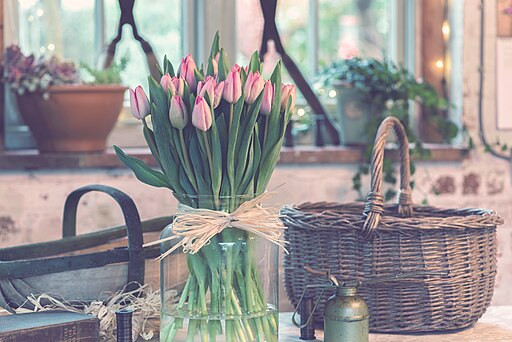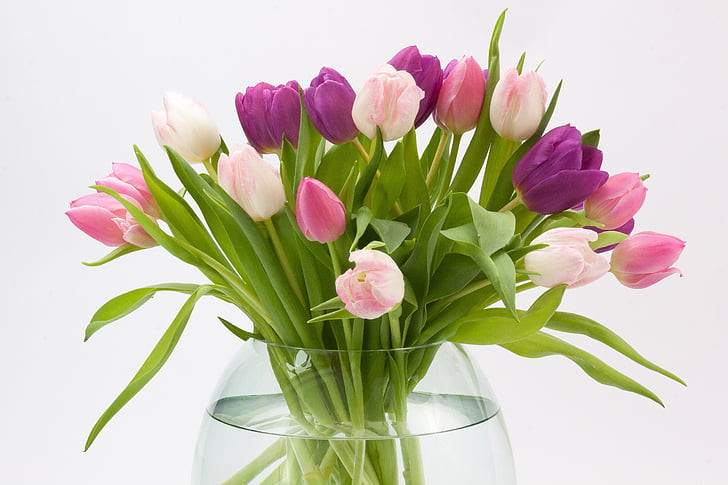Cut tulips: all the steps to take to keep them fresh and vibrant for longer in a vase

Native to the Middle East and Central Asia, the tulip was brought to Europe in 1554 by the Dutch ambassador, Ogier Ghislain de Busbecq, who sent some bulbs to the head of the royal gardens in Holland, Carolus Clusius. Tulips soon thereafter became a prized bloom and a symbol of luxury and wealth.
The tulip is considered the symbol of harmonious relationships, changing its specific meaning depending on the color:
- Pink symbolizes affectionate love or friendship;
- Yellow represents the smile of the person receiving them;
- Red is a symbol of a true and deep love;
- Violet symbolizes modesty;
- White is a request for forgiveness.
We all know, however, that tulips, once cut, are very delicate flowers and can wither and wilt very quickly in adverse conditions.
So how can you make your tulips last longer in vases? Below, we show you some ways to do this:
Purchasing and cutting the stems

Jez Timms jeztimms/Wikimedia Commons
Extending the lifespan of your tulips starts from the purchasing: it is best to buy flowers in which the color is already clearly evident, but with their flower buds still closed.
Once you get home, before placing your tulips in the vase, cut their stems to promote water and nutrient consumption; make an oblique cut 2-3 centimeters from the base in order to provide the flower with a greater absorption surface (and use a sharp, sterilized knife). Avoid using scissors as these could damage the stems.
When you cut the stem, also remove the lower leaves. If these lower leaves are left on and get wet, they will wither quickly and affect the rest of the flower.
Keeping tulips vibrant

Guarantee a longer life for your tulips by using a clean, sterilized vase for them. This ensures bacteria will not (immediately) contribute to a more rapid deterioration of the flowers. Tulips require a lot of water, but nothing else: use fresh, clean water, and change it daily, making sure that the lower part of the stems are always immersed.
Tulips follow the light, which is why it is important to place them in a bright room, but away from direct sunlight; pay attention to any nearby sources of heat and drafts, which could accelerate their deterioration. Keep the ambient temperature cool and you can even add an ice cube to the vase to help with this.
Taking these steps, you tulips should last for at least 7 days!